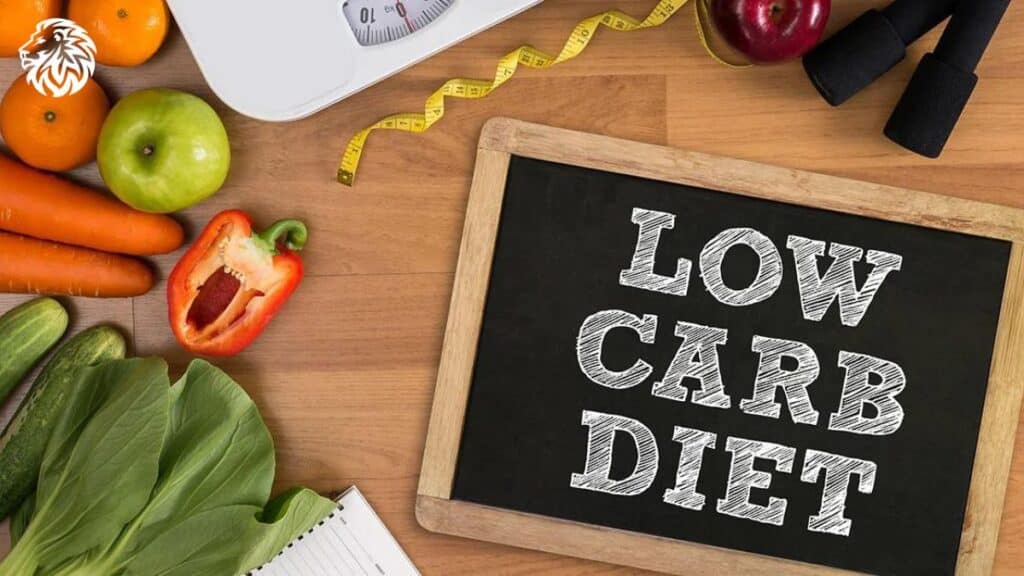Weight loss: It’s a journey that many embark on, fueled by a myriad of motivations. Perhaps it’s the beckoning call of a once-in-a-lifetime event, an outfit waiting to be perfectly worn, or a doctor’s concern echoing in one’s ears. For some, it’s a deeply personal goal, birthed from the simple desire to feel better, more energetic, and more in tune with one’s body. But regardless of the initial spark, one thing is undeniable: the desire for swift results.
The modern world’s fast-paced nature often has us yearning for immediate change, including in our physical appearance and health. This collective impatience, however, comes with its pitfalls. As the urgency to shed pounds quickly intensifies, the allure of shortcuts and quick fixes becomes more tempting. But it’s essential to tread with caution. The road to weight loss, while paved with determination, must also be marked by safety and sustainability.
In this article, we will delve into three proven methods to expedite weight loss. But remember, the emphasis isn’t just on speed, but also on ensuring a healthier and happier you in the long run. Because, after all, what’s the use of a temporary change when life is a continuous journey?
Understanding the Basics of Weight Loss

Before we dive deep into specific weight loss methods, it’s imperative to have a solid grasp on the foundational concepts behind weight loss. Think of this as building a house; one wouldn’t start with the roof without first ensuring a strong and steady base. Similarly, understanding the basics of weight loss will arm you with the knowledge to make informed decisions and set the stage for sustainable success.
The Science of Calories
At its most basic, weight loss boils down to a simple equation: the calories you consume versus the calories you burn. A calorie is a unit of energy, and our bodies need this energy to function, from powering our organs to giving us the energy to move.
- Calories In: This refers to the total number of calories you consume through food and drink. Everything you ingest, from that morning coffee to your midnight snack, contributes to this.
- Calories Out: This represents the total number of calories your body expends in a day. This not only includes calories burned through physical activity but also those used for basic bodily functions, like breathing and digestion, known as your Basal Metabolic Rate (BMR).
For weight loss to occur, one must consistently burn more calories than they consume, creating a “caloric deficit.” Conversely, consuming more than you burn leads to weight gain.
The Role of Metabolism in Weight Loss
Metabolism, in simple terms, refers to the rate at which your body converts food into energy. Everyone’s metabolic rate varies based on factors like age, genetics, muscle mass, and activity level. A faster metabolism means that your body burns calories more efficiently, making weight loss potentially easier. On the other hand, a slower metabolism might require more effort in terms of dietary adjustments or increased physical activity.
Boosting one’s metabolism, whether through increased muscle mass, dietary changes, or specific exercises, can be a valuable tool in the weight loss journey. It’s like giving your body a little extra push to burn calories more efficiently.
The Dangers of Crash Diets
In a world that often champions instant gratification, crash diets – those that promise rapid weight loss in a short period – can seem enticing. However, these diets often come at a hefty price. By drastically reducing calorie intake or eliminating entire food groups, these diets can lead to:
- Nutritional deficiencies, depriving the body of essential vitamins and minerals.
- Loss of lean muscle mass instead of fat.
- A slowed metabolism, making future weight loss more challenging.
- Increased risk of health complications, including cardiac issues, gallstones, and weakened immunity.
- A rebound effect, where rapid weight gain occurs after resuming regular eating habits.
The allure of quick results might be tempting, but the potential risks of crash diets underscore the importance of pursuing weight loss in a measured, informed, and sustainable manner.
In essence, while the journey towards weight loss may be filled with challenges and decisions, having a foundational understanding ensures that you’re well-equipped to navigate the path ahead. By acknowledging the fundamental principles and steering clear of dangerous shortcuts, you pave the way for not just temporary success but long-term health and well-being.
Method 1: Intermittent Fasting (IF)

As we dive into the realm of effective weight loss methods, Intermittent Fasting (IF) undoubtedly stands out as a trend that has garnered significant attention and research backing in recent years. But what exactly is it, and how does it work? Let’s dissect this approach and understand its potential benefits and drawbacks.
Definition and Overview
What is IF? At its core, Intermittent Fasting is not about what foods to eat, but rather when to eat them. IF involves cycling between periods of eating and fasting, effectively controlling your eating windows.
Benefits
Intermittent Fasting is not just a fleeting trend; it’s backed by science, with several potential advantages:
- Enhanced Fat Burning: With prolonged fasting periods, the body runs out of stored glucose and begins burning stored fat for energy, aiding in weight loss.
- Improved Metabolism: IF can potentially increase metabolic rate, further promoting calorie burn.
- Cellular Health Benefits: Studies suggest that IF can initiate cellular repair processes, like autophagy, where cells remove damaged components.
How to Implement
If you’re considering giving IF a try, understanding the different methods can help you choose the best fit:
- 16/8 Method: Perhaps the most popular approach, this involves fasting for 16 hours and eating during an 8-hour window. For instance, if you choose to eat between 12 pm and 8 pm, you’d fast from 8 pm to 12 pm the next day.
- 5:2 Diet: This method involves eating normally for five days of the week and significantly restricting calorie intake (around 500-600 calories) for the other two days.
- Eat-Stop-Eat: A more advanced method, this involves a full 24-hour fast, once or twice a week.
- Best Practices:
- Stay Hydrated: Drink plenty of water during fasting periods.
- Opt for Balanced Meals: Ensure that your eating windows are filled with nutrient-rich foods.
- Listen to Your Body: If you feel unwell, consider breaking your fast or trying a different method.
Potential Downsides and Precautions
Like any dietary approach, IF is not a one-size-fits-all solution:
- Not Suitable for Everyone: Those with certain medical conditions, pregnant or breastfeeding women, and individuals with a history of eating disorders should consult with a healthcare professional before trying IF.
- Possible Side Effects: Especially in the initial stages, you might experience fatigue, irritability, or hunger pangs. It’s essential to monitor these feelings and adjust if necessary.
- Potential Nutrient Deficiencies: With reduced eating windows, there’s a risk of not getting adequate vitamins and minerals if one isn’t careful about meal choices.
Intermittent Fasting presents a unique approach to weight loss, promoting not just calorie restriction but also aligning with our body’s natural rhythms. As with any method, it’s crucial to stay informed, listen to one’s body, and prioritize health above all else.
Method 2: High-Intensity Interval Training (HIIT)

As the realm of fitness continues to evolve, High-Intensity Interval Training, commonly known as HIIT, has emerged as a powerhouse. With its unique structure and myriad benefits, it’s no wonder HIIT has taken the fitness world by storm. But what lies behind this buzzword, and how can it be utilized effectively?
Definition and Overview
What is HIIT? HIIT is a form of exercise that alternates between short, intense bursts of activity followed by periods of rest or low-intensity exercises. This cycle is repeated several times within a workout session.
Benefits
The surge in HIIT’s popularity isn’t unfounded. This exercise method comes packed with a host of benefits:
- Efficiency in Calorie Burn: The intense nature of the workouts ensures that you burn a significant number of calories in a short timeframe.
- Boosted Metabolism: HIIT not only burns calories during the workout but can also elevate your metabolic rate post-exercise, a phenomenon known as the “afterburn” or EPOC (excess post-exercise oxygen consumption).
- No Equipment Necessary: While there are HIIT routines that incorporate gym equipment, many exercises can be done using only your body weight, making it accessible to almost everyone.
How to Implement
If you’re eager to jump into the HIIT bandwagon, here are some sample workouts and guidelines to get you started:
Bodyweight HIIT:
- 30 seconds of burpees, followed by 30 seconds rest.
- 30 seconds of push-ups, followed by 30 seconds rest.
- 30 seconds of mountain climbers, followed by 30 seconds rest.
- 30 seconds of squat jumps, followed by 30 seconds rest.
- Repeat 3-4 times.
Treadmill HIIT:
- 1-minute sprint, followed by 1-minute walk or slow jog.
- Repeat 8-10 times.
Recommendations on Frequency and Duration:
- Ideally, you should aim for 2-3 HIIT sessions per week to allow your body adequate recovery time.
- Each session can last anywhere from 15-30 minutes, depending on your fitness level and the intensity of the exercises.
Potential Downsides and Precautions
While HIIT offers numerous advantages, it’s essential to be aware of potential pitfalls and exercise caution:
- Risk of Injury: The intense nature of HIIT can increase the risk of injury if exercises are not done with proper form. Always ensure that you’re performing movements correctly to avoid undue strain.
- Not Suitable for All Fitness Levels: While HIIT can be modified for beginners, those with certain medical conditions or individuals new to exercise should consult a fitness professional before starting. It’s crucial to start slow and ramp up the intensity as you grow more accustomed.
- Recovery is Key: The high intensity of these workouts can be taxing on the muscles and cardiovascular system. Ensure you’re giving your body ample time to recover between sessions to avoid burnout and overtraining.
HIIT provides an efficient and flexible approach to fitness, promising quick results in a condensed timeframe. However, like all exercise regimens, it’s essential to practice HIIT mindfully, prioritizing form and recovery to reap the full spectrum of benefits without sidelining yourself with injuries.
Method 3: Low-Carbohydrate Diet

From the Atkins to the Keto, the overarching principle of a low-carbohydrate diet has taken various forms over the years. Celebrated for its potential weight loss benefits, this diet revolves around minimizing carbs while spotlighting proteins and fats. Let’s delve deeper to understand this dietary approach’s nuances.
Definition and Overview
What is a Low-Carbohydrate Diet? This diet significantly reduces the intake of carbohydrates, often to less than 20-50 grams per day, and emphasizes higher consumption of proteins and healthy fats. The idea is to shift the body’s primary energy source from carbs (glucose) to fats (ketones), a state known as ketosis.
Benefits
Embracing a low-carb lifestyle can offer a range of potential benefits:
- Faster Weight Loss: By cutting carbs, the body is forced to burn stored fat for energy, often resulting in quicker weight loss compared to other diets.
- Stabilized Blood Sugar: A low-carb diet can lead to more consistent blood sugar levels, making it an option some consider for diabetes management.
- Reduced Appetite: Some studies suggest that a low-carb diet might naturally reduce appetite by stabilizing blood sugar and insulin levels.
How to Implement
Embarking on a low-carb journey requires understanding which foods to embrace and which to limit:
Foods to Include:
- Proteins: Meat, poultry, fish, and eggs.
- Healthy Fats: Olive oil, coconut oil, avocados, and nuts.
- Low-Carb Vegetables: Leafy greens, cauliflower, broccoli, and zucchini.
- Dairy: Cheese, butter, and cream (preferably full-fat).
Foods to Avoid:
- Sugary Foods: Sodas, fruit juices, candies, and many desserts.
- Grains: Bread, pasta, rice, and cereals.
- Starchy Vegetables: Potatoes, sweet potatoes, and corn.
- Most Fruits: Especially tropical ones. Berries can be consumed in moderation.
Tips on Transitioning:
- Start by gradually reducing carb intake to ease into the diet.
- Stay hydrated and increase salt intake slightly to counteract water loss from reducing carbs.
- Consider supplementing with magnesium and potassium to avoid muscle cramps.
Avoiding the “Keto Flu”:
As your body adapts to burning fat for fuel, you might experience flu-like symptoms—fatigue, headaches, irritability. Drinking bone broth, staying hydrated, and ensuring adequate salt can help alleviate these symptoms.
Potential Downsides and Precautions
While a low-carb diet can be beneficial for many, it’s not without its potential drawbacks:
- Sustainability Concerns: For some, significantly reducing carb intake can be challenging to maintain long-term. It’s essential to find a balance that’s both effective and sustainable for your lifestyle.
- Potential Nutrient Deficiencies: By eliminating certain food groups, there’s a risk of missing out on essential nutrients. Ensure you’re getting a diverse range of foods and consider supplements if necessary.
- Adverse Effects: Some might experience constipation, bad breath, or leg cramps, especially in the initial stages. Drinking water, consuming enough salt, and incorporating high-fiber low-carb vegetables can help.
A low-carbohydrate diet, when approached mindfully, can be an effective weight loss tool. Like all diets, it’s essential to tailor it to your individual needs, listening to your body’s signals, and ensuring a balanced and nutrient-rich food intake.
Combining Methods: The Power of IF, HIIT, and Low-Carb

When aiming for a transformative weight loss journey, combining different methodologies can sometimes provide synergy, offering results that are greater than the sum of their parts. Intermittent Fasting (IF), High-Intensity Interval Training (HIIT), and the Low-Carbohydrate Diet are each potent in their own right, but when strategically aligned, they can complement each other beautifully.
How They Complement Each Other
- Metabolic Enhancement: Both IF and a low-carb diet shift the body’s primary energy source from glucose to stored fat. When combined with HIIT, which induces the calorie-burning “afterburn” effect, the result is a potent metabolic boost.
- Maximized Fat Burning: IF and low-carb both promote the state of ketosis. Add to this the fat-burning benefits of HIIT, and you have a trifecta that promotes efficient fat utilization.
- Appetite Control: The appetite-reducing effect of a low-carb diet, combined with the hunger-regulating benefits of IF, can make caloric restriction more manageable.
- Flexible Workout Timing: Practicing HIIT during the eating window in IF can ensure you have the necessary energy for the intense workouts, while also capitalizing on enhanced fat burning.
Tips for Creating a Personalized Weight Loss Plan
- Gradual Introduction: If you’re new to any of these methods, start slow. Introduce one approach at a time to allow your body to adjust before adding another layer.
- Listen to Your Body: Not everyone reacts the same way to dietary and fitness regimens. Be attentive to how your body responds. If something feels off, reevaluate and adjust.
- Stay Hydrated: Especially since all three methods can lead to increased water loss. Drink ample water throughout the day and consider supplementing with electrolytes if you’re feeling fatigued or crampy.
- Prioritize Nutrition: A low-carb diet doesn’t mean neglecting essential nutrients. Ensure you’re getting a diverse range of proteins, fats, and low-carb veggies. Consider supplements if there are potential deficiencies.
- Recovery is Crucial: HIIT, by nature, is demanding. Ensure you’re allowing ample time for muscle recovery, especially when fasting.
- Consult Professionals: If in doubt, or if you have underlying health conditions, consult a nutritionist, fitness trainer, or healthcare provider. They can provide insights tailored to your specific situation.
- Adjust and Adapt: Your needs might change over time. Regularly assess your progress and well-being, and don’t hesitate to modify your approach if necessary.
In essence, combining IF, HIIT, and a low-carb diet can offer a multifaceted approach to weight loss. When integrated thoughtfully, these methods can build upon each other’s strengths, offering a holistic strategy that addresses diet, metabolism, and physical fitness. However, the most crucial factor remains individual well-being; any weight loss journey should prioritize health, balance, and sustainability above all else.
Conclusion
Weight loss, often perceived through the narrow lens of aesthetics, is much more than just a physical transformation. It’s a deeply personal journey that encompasses the intertwined realms of mental well-being, physical health, and emotional resilience. While the path trodden might differ from one individual to another, the destination remains similar: achieving a healthier, more balanced version of oneself.
The methods of Intermittent Fasting, High-Intensity Interval Training, and the Low-Carbohydrate Diet offer just a few among the myriad ways to approach this journey. But it’s essential to remember that there’s no one-size-fits-all answer. The most effective strategy is often tailored, taking into account personal preferences, health considerations, and lifestyle constraints.
Yet, amidst the fluctuating waves of motivation and the enticing allure of quick fixes, a few tenets stand unshaken: the importance of consistency, patience, and making informed choices. Consistency ensures that efforts, even if small, accumulate over time. Patience reminds us that lasting change is often gradual, requiring us to respect our body’s pace. And making informed choices signifies the empowerment of knowledge, allowing us to take the wheel of our journey with confidence and clarity.
As you navigate the vast seas of weight loss information, may you find your compass in self-awareness, your anchor in determination, and your North Star in the vision of a healthier, happier you. After all, the journey towards weight loss is not just about shedding pounds but about embracing a life of vitality, balance, and holistic well-being.







